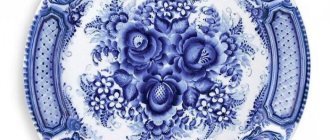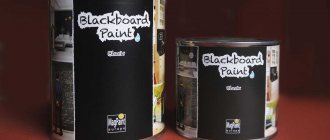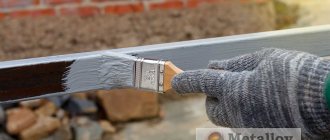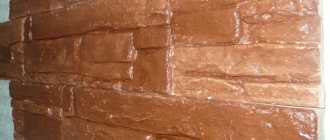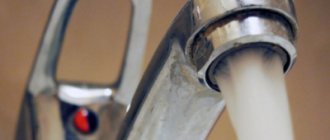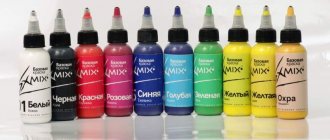Composition of paints and varnishes
In modern construction, high-quality silicate paints are widely used, created on the basis of liquid glass with the addition of ethyl silicate, which, due to their properties, are ideal for performing facade work and painting indoor walls . In some cases, they contain special polymeric substances - organosilicon resins, which give additional strength to the material.
To give a particular shade, special pigments are added, obtained from metals and in powder form. Aluminum and zinc pigments also impart pronounced anti-corrosion properties. Paint based on liquid glass and ethyl silicate acquires the required thickness by adding mica, talc, chalk and some other similar fillers.
The role of ethyl silicate in the composition of this type of paint is such that it promotes the formation of a thin and viscous film, which is characterized by high mechanical strength and fire resistance. Most manufacturers use sodium ethyl silicate, known as GKZh-10. As a result, the paint and varnish material is able to retain its original properties for a long time. In any case, the amount of ethyl silicate used should be exactly 10% of the total mass of liquid potassium glass, which is in the base.
Recommendations for selection
There are many varieties of silicate-based paints on sale. They differ in technical characteristics and scope of application. The most popular is silicate paint ST-54, which is produced by. The cost of this product is 4.4 thousand rubles. for 5 l. Caparol paint is also in demand. Its cost reaches 5.5 thousand rubles. for a capacity of 12 liters.
When choosing a composition, you need to pay attention to its wear resistance class. The most resistant to abrasion is class E1. It is practically impossible to wash a layer of E5 class paint. The first category is for facades. Class E5 can only be used in dry, clean rooms.
The density of the composition directly affects its consumption. More liquid formulations are consumed more economically. Also on sale are paints that can be applied from 1 to 4 layers. The lower the grade, the fewer layers need to be applied to obtain the required shade. It is better to give preference to class 1 products.
Scope of application
Appearing relatively recently on the construction market, silicate paints quickly became popular and in demand. The scope of application of facade paints made on the basis of liquid potassium glass and ethyl silicate is quite wide:
- Painting of any mineral wall surfaces: limestone, cement, cement-plaster and some others.
- Renovating the facades of historical buildings, on the surface of which the paint has crumbled or has become dull and unattractive.
- Providing reliable weather protection for any building facades.
- High-quality renovation of the external surfaces of the walls, which were previously treated with plasters.
This type of paint and varnish coating is also used for painting walls during interior work. It goes well with such types of coatings as:
- concrete;
- plasters (applied with a fresh layer or old and well puttied);
- brick – silicate and red;
- clay;
- gypsum.
When using such materials for treating walls and other surfaces, keep in mind that they are strictly incompatible with natural wood, polypropylene, polyvinyl chloride and other types of plastics, as well as with stone, which contains stillage, resin and other organic components.
general characteristics
Silicate facade paint and compositions for interior work are used to protect various surfaces. Most often this product is used for brick and concrete foundations. The scope of application of this paint is extensive. It can be used in fairly dusty conditions.
Thus, the main area of application of silicate paint and varnish compositions is the design of building facades. There are varieties on sale that are intended for interior work. Also, silicate varieties of paints are used in the process of applying markings on the roadway.
This is a one-component composition that is made on a mineral basis. Moreover, this type of paint is truly universal. It is available in the form of a one-component composition. The relatively low cost and special characteristics make silicate paint for facades and interiors popular among domestic buyers.
Varieties
Today, there are two main types of coatings based on liquid glass with the addition of ethyl silicate - silicate-silicone and dispersion-silicate paints. There is a certain difference between them.
Dispersion silicate paints contain approximately 8% high-quality pure acrylic, which acts as a binder. Because of this feature, the diffusion properties of this product are somewhat reduced. In addition, this type of paint and varnish coating is one-component, that is, it does not require preparation immediately before use, while simple silicate paints consist of two separate components - liquid glass and powder.
Silicate-silicone paint is also widely used for interior and exterior work. It is good because it combines the best properties characteristic of dispersion and simple silicate paints. Because silicone resins do not form a film, the painted surface is able to “breathe.” In addition, such paints are vapor-proof and also provide any surface with reliable protection from rain and snow. Many well-known companies have well-established production of this type of coating - “Ceresit”, “Kreisel” and others.
Silicate paints
Silicate paints are a special category of paints and varnishes. They are made on the basis of liquid glass, endowing them with completely unique properties. Such as high resistance to penetration of moisture, steam, ultraviolet rays.
Surfaces painted with it can withstand repeated changes in temperature and humidity. They resist aggressive environments well and acquire enhanced strength properties. Therefore, silicate paint is used equally successfully for facades and interiors.
Many well-known companies are engaged in the production of such paint, these are: Ceresit, Bolix, Tikkurila, Kaparol. You can choose materials intended only for indoor or outdoor use. But there are also universal ones that work in any conditions.
Components of the material
The paint is based on liquid potassium glass. In addition to it, different silicate paints contain various fillers and pigments of the desired shade. Oxides of various metals - iron, zinc, aluminum and others are usually used as colors. the filler can be talc, mica, chalk and similar substances. Each manufacturer has its own recipe, but the main properties of the material are preserved.
Silicate paint can be:
- One-component, when it is ready for use. It contains acrylic, which makes the material more dense and flexible.
- Two-component. In this case, you need to buy separately - powder and liquid glass. Combine the ingredients immediately before use.
The characteristics of the material do not change depending on the form in which it is found. This only affects the method of storing and using the coloring composition.
Basic properties of silicate paints
The most famous and used is the universal silicate water-dispersion paint ST 54 from the Ceresit brand, the technical characteristics of which will be discussed below. It consists of:
- liquid potash glass,
- aqueous dispersion of a copolymer of acrylic and silicone,
- colors,
- modifiers.
It has excellent adhesion to concrete, stone, brick surfaces, but without priming. If you can’t do without a primer, then it should also be silicate. Works well on metal and wood. The following table outlines the most important material characteristics.
Temperature during operation
Temperature during operation
300-450 for two layers (depending on the degree of absorption of the surface to be painted)
Judging by the indicators, the silicate paint in question, as a façade paint, meets all expectations. She:
- easy to prepare and also easy to apply to the surface,
- has a relatively low cost,
- does not emit harmful substances, that is, it is environmentally friendly,
- inert to fire,
- does not fade and lasts a long time
It's a pleasure to work with such material. The paint has good workability and does not have an unpleasant odor.
Application technology
There are no special requirements for the application of silicate paints for both interior and exterior work. The usual list of activities performed during any painting work is suitable here. Except for the primer. We have already said that you can not use it at all, or use only silicate primer. To do this, mix liquid glass with water in a ratio of 1:3.
- The surface for painting must be prepared. First, it is removed from the old finish and leveled. If the unevenness is deep and extensive, then plastering work is performed. If the defects are minor, they can be filled with liquid glass, dried and polished.
- If you decide to work with a primer, then it must be applied in an even layer using a roller with a velor cover. Drying will take 11-12 hours at an air temperature of about 25°C.
- When a ready-made composition of the desired color is used, it is stirred thoroughly. If necessary, the paint can be diluted with clean water. To apply to a solid surface, it is convenient to use a roller; it is better to get into hard-to-reach places with a brush. You can also use a spray bottle, but do not forget to use personal protective equipment.
- When using two-component mixtures, you first need to prepare a composition with a creamy consistency, add the desired pigment to it and mix thoroughly. In order to save money, you should not prepare a large amount of coloring composition at once.
The consumption of silicate paint per 1 m2 of painted area in one layer is approximately 140-150 grams. But this value may vary depending on the condition of the surface and its ability to absorb liquids.
Silicate paints
What is silicate paint, its composition and technical characteristics, application technology.
Terms of use
Silicate paints are very easy and convenient to apply to walls, both inside and outside. However, before painting them, the surface must first be properly prepared.
There should be no particles of old paint or plaster left on the wall that you are going to treat - all this must be thoroughly cleaned.
If the surface of the facade is heterogeneous and, therefore, has different degrees of absorbency, it must be treated with an aqueous primer solution.
When performing interior or exterior work using such paints, the air temperature must be at least +5°C. In addition, it is necessary to avoid exposure of the painted surfaces to precipitation and sunlight. Otherwise, the paint will acquire a spongy structure and become brittle.
When starting painting, you should think about safety precautions in advance. The skin of your hands should be protected with rubber gloves. After use, the container should be hidden away from children.
Preparatory work before painting
It will not be possible to obtain a high-quality protective layer without taking into account the specifics of its application to the facade.
- The wall is examined for the presence of old paint coating.
- Plaster that has lost its integrity is removed from the surface. If you do not inspect the façade before painting, the new protective layer will peel off.
- The base is pre-primed so that there is no excess moisture on its surface.
- The color is chosen so that it matches the previous layer. Then no stains appear on the surface.
- The work is carried out at temperatures from 0°C to +5°C, so that the weather conditions are neutral (no precipitation, scorching sun).
Advantages and disadvantages
Paints made on the basis of liquid glass and ethyl silicate have many important advantages that set them apart from a number of other paint and varnish coatings.
- They are widely used for painting facades due to their increased resistance to ultraviolet radiation and temperature changes.
- They are chosen for painting building facades due to the fact that they can last much longer and are more reliable than those based on lime. They are resistant to even the most aggressive atmospheric conditions - including smog and acid rain.
- Another important feature that encourages the use of liquid glass paint for exterior and interior work is its high biological resistance. This means that painting walls with this product will prevent the appearance of fungi and other microorganisms, and will also protect against insects.
However, you should not lose sight of some of the disadvantages inherent in this type of paint and varnish products:
- The product is toxic and unsafe, therefore, during the work process, the use of special protective methods is required.
- Incompatibility with paints and varnishes of synthetic origin that have an organic base.
- Absolutely indelible.
The use of paints based on liquid glass and ethyl silicate is an excellent opportunity to create a well-protected facade coating. In addition, they are indispensable when creating stained glass windows and applying road markings. When starting to work with them, study all the characteristic properties and rules of use.
Technical characteristics
Any silicate compositions for facades must meet certain requirements characterizing the quality of the material.
Main technical characteristics of these coloring compositions:
- color - must match the approved range of colors;
- specific smell - absent;
- % mass component of non-volatile elements - not less than 70;
- composite viscosity (in sec.) - from 120 to 150;
- working viscosity (in seconds) - from 38 to 45;
- Drying time (at +20°C) - 24 hours (one layer);
- Drying time for the second layer is from 6 to 10 hours;
- fire resistance (fire resistance according to GOST 16363) - does not ignite (group I);
- consumption per m2 (g/m²) - 350-400 (for two layers of coating);
- service life - from 8 to 10 years;
- resistance to microorganisms according to GOST 9.048 - up to 1 point.
Storage of silicate dyes can last up to two years in production packaging, 1-2 months in a previously used tightly closed jar.
In addition to these indicators, the composition should be characterized as:
- for outdoor work;
- heat-resistant paint and varnish material;
- moisture resistant;
- fire retardant
The standard must comply with GOST 18958-73.


